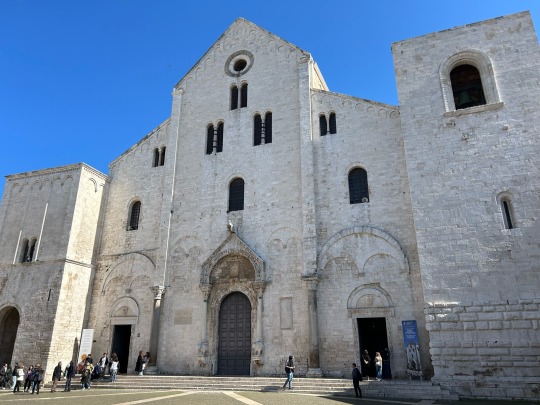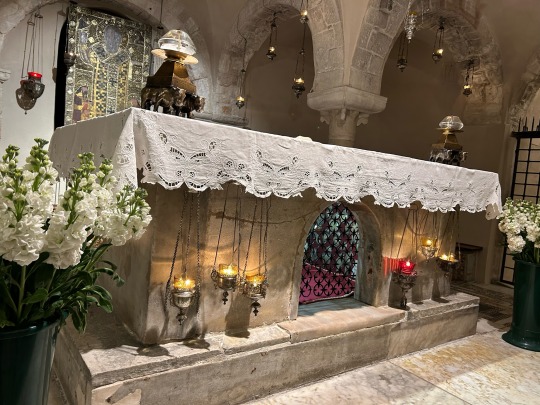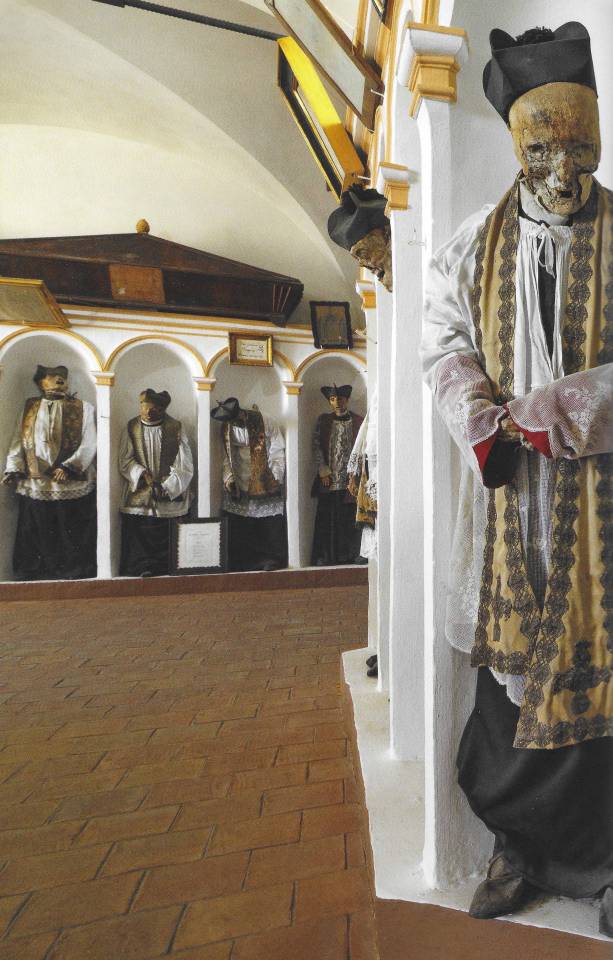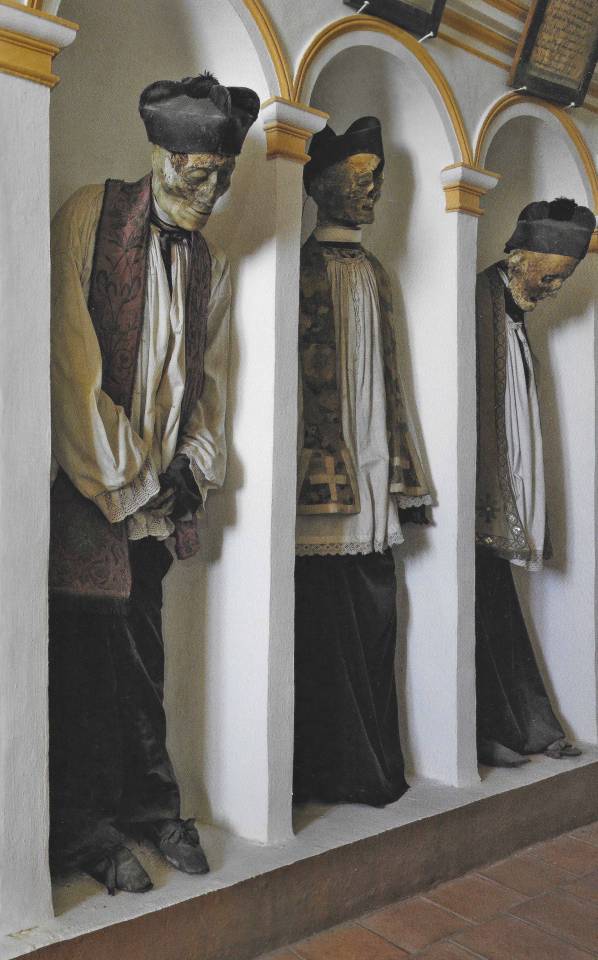#nicholas of bari
Explore tagged Tumblr posts
Text



O good St. Nicholas, you who are the joy of the children, put in my heart the spirit of childhood, which the Gospel speaks, and teach me to seed happiness around me.
You, whose feast prepares us for Christmas, open my faith to the mystery of God made man. You good bishop and shepherd, help me to find my place in the Church, and inspire the Church to be faithful to the Gospel.
O good Saint Nicholas, patron of children, sailors and the helpless, watch over those who pray to Jesus, your Lord and theirs, as well as over those who humble themselves before you. Bring us all in reverence to the Holy Child of Bethlehem, when true joy and peace are found. Amen.
Nicholas: The Boy Who Became Santa (1990) dir. Fernando Uribe and Steven Hahn
#random stuff#catholic#catholic saints#saint nicholas#nicholas of myra#nicholas of bari#nicholas the wonderworker#san nicolas#santa claus
1 note
·
View note
Text






Basilica di San Nicola, Bari
#basilica di san nicola#saint nicholas#basilica#romanesque#architecture#church architecture#church#catholic church#bari#puglia#apulia#italia#italytravel#italy#europe#southern italy#travel#photography#travel photography#history#photographers on tumblr#culture#art#art photography#architecture photography
37 notes
·
View notes
Text

Romanesque column near the tomb of St. Nicholas.
Basilica Pontificia San Nicola, Bari
March 2024
#romanesque#column#bari#st. nicholas#italy#italia#travel#original photography#photographers on tumblr#photography#lensblr#wandering#urbanexploration#urban exploration#architecture#architecture photography#historical architecture#church#church architecture#church photography#wanderingjana
11 notes
·
View notes
Text

Medieval bull sculpture by the main door of the Basilica of Saint Nicholas in the Old Town of Bari, Puglia region of Italy
Italian vintage postcard
#the basilica of saint nicholas#sepia#photography#vintage#nicholas#sculpture#postkaart#basilica#the old town#main#door#ansichtskarte#ephemera#carte postale#postcard#italian#postal#town#briefkaart#region#bull#photo#italy#saint#bari#medieval#tarjeta#historic#puglia#postkarte
14 notes
·
View notes
Text
Don Moynihan at Can We Still Govern?
I don’t really know why Kamala Harris lost. The best explanation I’ve seen is that Harris ran into a buzzsaw of anti-incumbent post-pandemic disillusionment that has played out across the developed world. You can add more strategic or tactical explanations about her candidacy — the timing of Biden’s exit, specific themes she pursued — but I am not sure it overwhelms this. This sort of broad structural explanation is not terribly satisfying, especially if you are a pundit who is paid to have a take on what happened. And it turns out that the explanations for Harris losing correlate pretty well with the pundits’ pet peeves. And so, if you have been complaining about wokeness, or campus politics, for the past few years, it is obvious that this is at the heart of Trump’s win. [...]
Harris Did Not Run On Identity Politics
She did not open every event by introducing her pronouns, before swinging into a stump speech challenging the right of the state of Israel to exist, demanding trans athletes be allowed to compete, before concluding by calls to defund the police. According to Weiss, Stephens and Dowd, focusing on transgender issue was another bad strategic choice by Harris. And again, the evidence here is pretty thin. When asked, Harris offered some language about the dignity of trans people in her campaign, but made little in the way of firm commitments to support trans rights, and certainly did not make the case for putting trans athletes in sports. She did not “run” on these or other identity issues. You will never guess who did run on trans issues: Donald Trump. He attacked them in rallies, and in a series of ads.
[...] Those on the left were left complaining or biting their tongue when Harris campaigned with Liz Cheney, took a centrist approach to immigration, or when the Democratic convention did not feature Palestinian voices critical of Israel. So how does Dowd, Weiss, Stephens et al confidently assert the identity politics claim? These takes exist because this is a lazy pre-existing narrative to be sold, not because of any actual analysis of the electorate. These are writers who for various reasons have committed to an anti-woke narrative. And once you have committed to that narrative, you are determined to force it into every story, no matter how misleading.
What is true: Trump, and the right, are very good at taking basic respect and empathy for other humans, and portraying that as dangerous: social justice, wokeness, diversity, equity and inclusion have all been converted into terms of mockery. Trump did not win because someone you were on a zoom call with used pronouns, or Latinx, or some college grad corrected you for using the word homeless. You might find all of those things annoying, but it’s not a reason to excuse truly radical politics in America. He especially did not win because Democratic politicians went all in on those themes, because they did not. It could be that Dems lost support because they did not throw vulnerable groups under the bus, but that is a different argument than claiming they campaigned on those topics.
Trump Did Run On Identity Politics
You know who did run on identity politics? The person who will be President next January.
As noted above, Trump directly attacked trans people. And an extensive list of other groups, most notably immigrants. He even opposed bipartisan legislation on immigration because doing so would have robbed his chief talking point on campaign trail. He used false claims to denigrate those groups as deviants and threats to Americans. This is identity politics. There are many more examples. Trump deliberately targeted disaffected young men. This has been celebrated as canny political strategizing, but not identity politics. He described cities in America as hellholes. He boasted of his beautiful white skin as he attacked Harris, whom he claimed had changed her racial identity. He promised to restore the names of Confederate leaders to US military bases. Trump appeals most directly to white Christian nationalists. His advocates last minute pleas to supporters identified by gender their most likely supporters.
[...]
The Media Refuses to Recognize the Right Engaging in Identity Politics
At this point, the term “identity politics” like the term “elites” does more to obfuscate to enlighten. I don’t know if Trump won *because* he engaged in identity politics, but it seems a far more plausible claim than the idea that Harris lost because she had done so. But we can’t have that discussion because the pundit class does not allow that Trump practiced identity politics.
To be sure, there are differences in types of identity politics. Identity politics is sometimes about establishing empathy and respect for less powerful groups, people who are different from you. This is the kind of identity politics that Harris was accused of engaging in. Identity politics is also about increasing the salience of shared group markers in order to celebrate that identity while also excluding and dehumanizing outgroups. This is the populist model of identity politics, which requires some outgroups to demonize, and which Trump engaged in repeatedly throughout his political career. He came to power surfing the tea-party claim that Obama was not one of us, not born in the United States. And he spent the last campaign complaining about immigrants “poisoning the blood of our country.” His efforts at expanding his appeal beyond white identity politics still evoked identity: he argued that immigrants were stealing “Black jobs” and “Hispanic jobs” or that teachers would turn your kids trans.
The critique of identity politics of the left is that it is oppressive — you will be cancelled for using the wrong pronouns! But the groups involved are mostly just seeking individual rights, the provision of which does not meaningfully damage the rights of others. By contrast, the identity politics of the right explicitly centers on controlling the bodies and choices of others, and the thoughts and actions of those that disagree with them. They remove books from classroom, tell students what they can learn, deny women reproductive care, or block trans people from serving their country. Part of the appeal of Trump’s identity politics is the promise of control over others. In the aftermath of Trump’s victory, messaging celebrating the expected control over women exploded on social media.
Don Moynihan nails it on the hypocrisy of identity politics, in that Trump was the one who practiced identity politics and not Harris.
#2024 Presidential Election#2024 Elections#Identity Politics#Bari Weiss#Maureen Dowd#Bret Stephens#Kamala Harris#Donald Trump#Nicholas Kristof
3 notes
·
View notes
Text




Norman carvings from the Basilica of Saint Nicholas, Bari
2 notes
·
View notes
Text
08 works, Today, August 21st, is the Forefathers Abraham, Isaac, and Jacob's day, his story illustrated #233
Abel PannAbraham, Isaac, and JacobPastel on paper25 3/4 by 34 in. 65 by 86.5 cmPrivate collection Abraham is known as the patriarch of the Israelite people through Isaac, the son born to him and Sarah in their old age and the patriarch of Arabs through his son Ishmael, born to Abraham and Hagar-his wife Sarah’s Egyptian slave-girl… Please follow link for full post

View On WordPress
#Art#Bari#Bible#Biography#Christ#Classical#Constantine#footnotes#History#Icon#Icons#Jesus#Knights#Luca Signorelli#mythology#Nicholas#Realism#religion#Saint#Zaidan
2 notes
·
View notes
Text

Saint Nicholas of Bari
20x30in. Acrylic, graphite, and ink on canvas
Kacper Abolik, 2023
2 notes
·
View notes
Photo

San Nicolás de Bari
by Pedro de Córdoba (Cordoban, fl. 1475) oil on canvas (c. 72 × 110)
Museo de Bellas Artes de Córdoba
1 note
·
View note
Text
SAINT OF THE DAY (December 6)

On December 6, the faithful commemorate a bishop in the early church who was known for generosity and love of children.
Born in Lycia in Asia Minor around the late third or fourth century, St. Nicholas of Myra is more than just the inspiration for the modern day Santa.
As a young man, he is said to have made a pilgrimage to Palestine and Egypt in order to study in the school of the Desert Fathers.
On returning some years later, he was almost immediately ordained Bishop of Myra, which is now Demre, on the coast of modern day Turkey.
The bishop was imprisoned during the Diocletian persecution. He was only released when Constantine the Great came to power and made Christianity the official religion of the Roman Empire.
One of the most famous stories of the generosity of St. Nicholas says that he threw bags of gold through an open window in the house of a poor man to serve as dowry for the man’s daughters, who otherwise would have been forced into prostitution.
The gold is said to have landed in the family’s shoes, which were drying near the fire.
This is why children leave their shoes out by the door, or hang their stockings by the fireplace in the hopes of receiving a gift on the eve of his feast.
St. Nicholas is associated with Christmas because of the tradition that he had the custom of giving secret gifts to children.
It is also conjectured that the saint, who was known to wear red robes and have a long white beard, was culturally converted into the large man with a reindeer-drawn sled full of toys because in German, his name is “San Nikolaus,” which almost sounds like “Santa Claus.”
In the East, he is known as St. Nicholas of Myra for the town in which he was bishop.
But in the West, he is called St. Nicholas of Bari because, during the Muslim conquest of Turkey in 1087, his relics were taken to Bari by the Italians.
St Nicholas is the patron of children and of sailors.
His intercession is sought by the shipwrecked, by those in difficult economic circumstances, and for those affected by fires.
He died on 6 December 346.
1 note
·
View note
Video
youtube
Bari Greece
0 notes
Text

Bicci Di Lorenzo (Italian, 1373-1452) The Birth of St Nicholas Of Bari
#Bicci Di Lorenzo#catholicism#sacred art#catholic saints#st. Nicholas of Bari#san nicola di bari#fiorentin painters
0 notes
Text




Bari, Puglia
#bari#bari puglia#puglia#apulia#italy#italia#travel#travel photography#photography#photographers on tumblr#architecture#culture#san nicolas#saint nicholas#art#sculpture#city photography#streets#urban#buildings#street photography#urban photography#urban landscape#cityscape#original photographers
17 notes
·
View notes
Text




The Basilica di San Nicola in Bari, the final resting place of the St. Nicholas of Christmas fame.
March 9, 2024
#saint nicholas#saint nick#travel#architecture#church#church architecture#Bari#italy#Italia#original photography#lensblr#photographers on tumblr#photography#history#historical architecture#Puglia#Apulia#wanderingjana
25 notes
·
View notes
Text
1 Religious Icon, Luca Signorelli's Saint Nicholas of Bari saving three knights, with footnotes #11
Luca SignorelliSaint Nicholas of Bari saving three knights from execution, Cortona circa 1450 – 1523Oil on panel10 5/8 by 8 3/4 in.; 27 by 22.2 cm.Private collection Sold for 176,400 USD in January 2022 The reign of Constantine The Great was not always stable. Borders had to be protected, laws enforced and if unrest broke out or even a sniff of conspiracy surfaced, Constantine also dealt with…

View On WordPress
#Art#Bari#Bible#Biography#Christ#Classical#Constantine#footnotes#History#Icon#Icons#Jesus#Knights#Luca Signorelli#mythology#Nicholas#Realism#religion#Saint#Zaidan
1 note
·
View note
Text


mummies of priests at church of st nicholas of bari in memento mori: the dead among us - paul koudounaris (2015)
157 notes
·
View notes